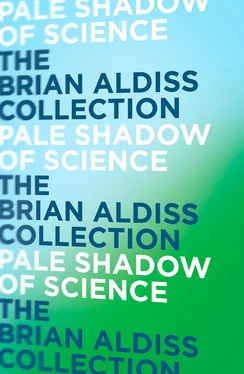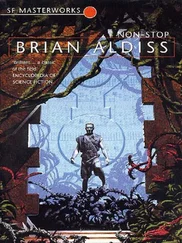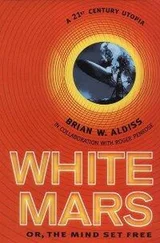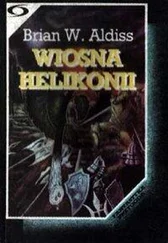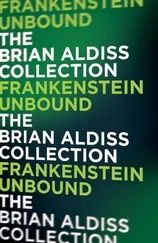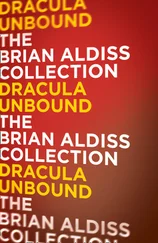‘WHAT OF THE IMMANENT WILL AND ITS DESIGNS?’ ASKS Thomas Hardy at the beginning of The Dynasts , and proceeds to demonstrate at length how little the Will cares for its creations. He leaves us with a faint hope that the Will can in some way evolve, and that ‘the rages of the Ages shall be cancelled,/Consciousness the Will informing,/Till it fashion all things fair.’ Thinking the matter over after the First World War, Hardy conceded that this was a little too optimistic: thereby leaving the door open for Olaf Stapledon.
Stapledon sweeps away the human characters in whom Hardy delighted, to give us a threadbare stage upon which humanity is lost in the incomprehensible toils of creation or the soliloquies of the Star Maker. The Star Maker is the Immanent Will wearing another hat.
W. Olaf Stapledon (1886–1950) is a very English kind of writer. He won no great reputation in his lifetime and has accumulated little since; yet he cannot be said to be entirely forgotten, despite his mysterious absence from most of the histories of English Literature.
His work in philosophy – a subject which at one time he taught in the University of Liverpool – has proved impermanent, although A Modern Theory of Ethics went through several reprints.
His kind of visionary writing, which attempts to establish an individual mythology, is not unfamiliar. His novel Odd John has a subtitle which recalls Blake (‘A Story Between Jest and Earnest’ – though there’s precious little enjoying of the lady in it); his grandiosities recall Doughty’s six-volume epic poem, Dawn in Britain , with its quixotic resolve to restore Chaucer to modern English. Two other conflicting voices echo strongly through Stapledon’s fiction: the Milton of Paradise Lost and that great Victorian storm-trooper, Winwood Reade, whose Martyrdom of Man attempted to justify the ways of man to a dead god.
We may call H.G. Wells’s early scientific romances science fiction with a clear conscience. It is more debatable whether Stapledon’s first novel, Last and First Men (1930), and Star Maker (1937) so qualify. They are Stapledon’s attempt to blend fiction and philosophy. Wells’s imagination was untainted by metaphysics, though politics finally eclipsed it; but Stapledon read Modern History while up at Balliol from 1905–09, and most of his fictions strive to iron themselves out into the progressions of historicity, complete with time-charts.
These two vast works, best regarded as a unity, are sui generis . The preface to Last and First Men warns that this ‘is not a prophecy; it is a myth, or an essay in myth.’ Even sterner is the disclaimer at the portals of Star Maker : ‘Judged by the standards of the Novel, it is remarkably bad. In fact, it is no novel at all.’
The Novel has proved itself unexpectedly capacious, but the Immanent Will does seem to demand a less convivial stage on which to enact the rages of the ages. The rages which energise the gaunt structures of Last and First Men and Star Maker are, basically, religious faith versus atheism and the quest for individual fulfillment versus the needs of the community, whether terrestrial or stellar. Modern rages, one might call them.
With their emphasis on spiritual suffering, catastrophe to come, and the surrealist mutations of shape which mankind must undergo in submission to the Creator, those great glacial novels, together spanning the thirties, now appear oddly characteristic of their day.
In many respects, Stapledon himself is markedly of his time. As were many men of his generation, he was torn by religious doubt; he was a non-combatant in the 1914–1918 war, and had some trouble in fitting himself, essentially a Victorian, into post-war society. Along with other intellectuals of his day, he flirted with pacifism and promiscuity. He had strong leanings towards Communism without ever becoming a member of the Party. Like many writers outside the swim of London literary society, he knew few other authors, and was critically disregarded.
It could also be said that the central premise of his work, that mankind is irrelevant to the purposes of the universe, is unpalatable to believer and unbeliever alike. It is precisely for that unpalatability, so variously, so swoopingly, expressed, as if in contradiction to itself, that his admirers honour him.
Last and First Men belongs to that class of book which needs to arrive in a reader’s life at the right moment if it is to arrive at all. Then one never forgets it.
I remember my first encounter with it. I was awaiting a typhus inoculation in Assam in 1943, before the British Second Division advanced on Japanese-held Mandalay. The medical officer was housed in a commandeered bungalow outside Kohima which possessed a considerable library. On the shelves stood a book I had never heard of, in two volumes, the first two volumes Allen Lane published in his blue series of Pelican Books (for he had taken Stapledon at his word and issued the work as non-fiction). I was captivated before I was inoculated.
For the last and first time in my life, I deliberately stole a book. I could not bear to be parted from it.
While great things went forward in the world – destruction and victory – Stapledon’s voice proved to be what was needed, in marked contrast to the pedestrian chat of soldiers. His daring time-scales in particular corresponded to something felt in the bloodstream.
What filled me then was Stapledon’s all-embracing vision of humanity locked within the imperatives of creation, untainted by a Christianity which seemed to have failed. Star Maker , written only seven years later, amplifies this vision, elevates it, and marks a great advance in the writer’s art. The two billion year long history of the future which is Last and First Men is encompassed in one paragraph of the second book. Again, human kind – this time one individual soul – is confronted with the necessity of comprehending the cosmic process of which it is part: a noble and ever-contemporary quest.
Noble or not, Stapledon has been neglected. He had a dislike of Bloomsbury and satirised the coterie in Last Men in London – which presumably did for him. If his name is to be preserved, it will be by science fiction readers. Science fiction studies are now so alarmingly advanced in the United States that the first two studies of Stapledon’s oeuvre are American. First was Patrick McCarthy’s Olaf Stapledon (Twayne, 1982). Now here comes the energetic, unorthodox Professor Leslie A. Fiedler, with Olaf Stapledon , A Man Divided (O.U.P., 1983). His volume appears in a series flatly entitled ‘Science Fiction Writers,’ edited by Robert Scholes, in which studies of Wells, Heinlein and Asimov have already appeared.
Fiedler has problems. One initial difficulty is that Last and First Men evidently did not arrive in his life at the right moment. He was ‘infuriated’ that it had no story or characters. He finds it improbable that he should be writing on ‘so anomalous an author.’ Not an encouraging start, not an encouraging attitude.
One’s initial misgivings are never allayed. Fiedler briefly covers Stapledon’s life (though not the Oxford years, when Stapledon rowed for his college), deems it an uneventful one, like the lives of most writers, and hurries on to investigate the glories and shortcomings of the fiction. The book reaches roughly the same conclusions as would any reasonable man: that Odd John is a worthwhile contribution in the Poor Little Superman line, that Sirius is late gold, and that Star Maker is the great triumph, with its ‘all but intolerable appeal.’ While finding the other writings disappointing, it relates them illuminatingly to one another.
Читать дальше
